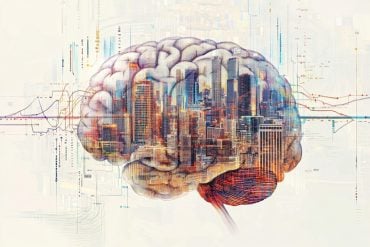Summary: A global study of nearly one million individuals has identified hundreds of genetic regions linked to socioeconomic status, revealing a shared genetic signal across income, education, occupation, and deprivation. Researchers found that about 9% of the variation in socioeconomic status could be attributed to genetics, while the rest was driven by social and environmental factors.
Using brain scans from over 40,000 participants, they discovered that higher socioeconomic status correlates with fewer white matter hyperintensities—brain lesions associated with cognitive decline and dementia. Importantly, the study highlights that socioeconomic status is a modifiable factor influencing brain aging, not a fixed genetic destiny.
Key Facts:
- Shared Genetic Signal: A common genetic factor underlies income, education, occupation, and social deprivation.
- Brain Health Link: Higher socioeconomic status is associated with better brain health, specifically fewer white matter lesions.
- Modifiable Risk: Socioeconomic status is a causal, changeable influence on how the brain ages—not a predetermined trait.
Source: University of Edinburgh
The world-first study analysed data from nearly one million people to determine links between genetics and measures of occupation, income, education and social deprivation.
They found that three quarters of the genetic effects linked to each of these four socioeconomic measures are common across them all.
This common signal, termed the genetic factor of socioeconomic status, was then analysed in the 947,466 individuals.
Using a research technique called a genome-wide association study – which looks for links with genetic variations and traits in the brain and behaviour – they found 554 regions in the human genome associated with socioeconomic status.
Using these data, they found that differences in socioeconomic status are a likely causal risk factor in the accumulation of white matter hyperintensities, a condition which could affect thinking skills, dementia risk, and brain function in later life.
Researchers say the findings show socioeconomic status may marginally help explain differences in brain health.
However, the majority of differences in cognitive health are explained by other environmental and social factors such as social conditions, specific policies and even luck, the team say.
An international team of researchers from the UK, Netherlands and Italy analysed genetic data from nearly one million people from the age of 30 to older age.
A common genetic variation accounted for nine per cent of the differences in socioeconomic status, researchers said. The majority of the reasons why people differed in social and financial standing was not due to genetic factors, they added.
The team then studied MRI brain scans from a separate group of around 40,000 people to determine if socioeconomic status influences brain structure and whether brain structure, in turn, affects socioeconomic status.
They found evidence that a higher level of socioeconomic status leads to lower levels of white matter hyperintensities in the brain.
Researchers say the results show the value of genetic data in identifying the role of changeable environmental risk factors – such as socioeconomic status – in how our brains age.
The study lead, Dr David Hill, an MRC Research Fellow of the University of Edinburgh’s School of Philosophy, Psychology and Language Sciences, said: “We found that there is a common genetic signal across measures of occupation, income, education, and social deprivation.
“By using this common socioeconomic status factor, we were able to capture aspects of socioeconomic status shared between the individual, the household, and the area in which one lives. This enabled us to better identify the causal effects of socioeconomic status on brain structure.”
Dr Charley Xia of the University of Edinburgh’s School of Philosophy, Psychology and Language Sciences, said: “Studies examining traits such as socioeconomic status using genetic data can be easily conflated – we have not shown that brain health is genetically determined – rather that through the use of genetic data we were able to identify socioeconomic status as a modifiable environmental influence on brain health in older age.”
The study used data from the UK Biobank, a major genetic study into the role of nature and nurture in health and disease and the Social Science Genetic Association Consortium.
The research was carried out by researchers from the Universities of Edinburgh, Bristol, University College London, Modena in Italy, Vrije University in the Netherlands and Amsterdam University Medical Center.
About this brain aging research news
Author: Joanne Morrison
Source: University of Edinburgh
Contact: Joanne Morrison – University of Edinburgh
Image: The image is credited to Neuroscience News
Original Research: Open access.
“Deciphering the influence of socioeconomic status on brain structure: insights from Mendelian randomization” by David Hill et al. Molecular Psychiatry
Abstract
Deciphering the influence of socioeconomic status on brain structure: insights from Mendelian randomization
Socioeconomic status (SES) influences physical and mental health, however its relation with brain structure is less well documented. Here, we examine the role of SES on brain structure using Mendelian randomisation.
First, we conduct a multivariate genome-wide association study of SES using educational attainment, household income, occupational prestige, and area-based social deprivation, with an effective sample size of N = 947,466.
We identify 554 loci associated with SES and distil these loci into those that are common across those four traits.
Second, using an independent sample of ~35,000 we provide evidence to suggest that SES is protective against white matter hyperintensities as a proportion of intracranial volume (WMHicv).
Third, we find that differences in SES still afford a protective effect against WMHicv, independent of that made by cognitive ability.
Our results suggest that SES is a modifiable risk factor, causal in the maintenance of cognitive ability in older-age.







